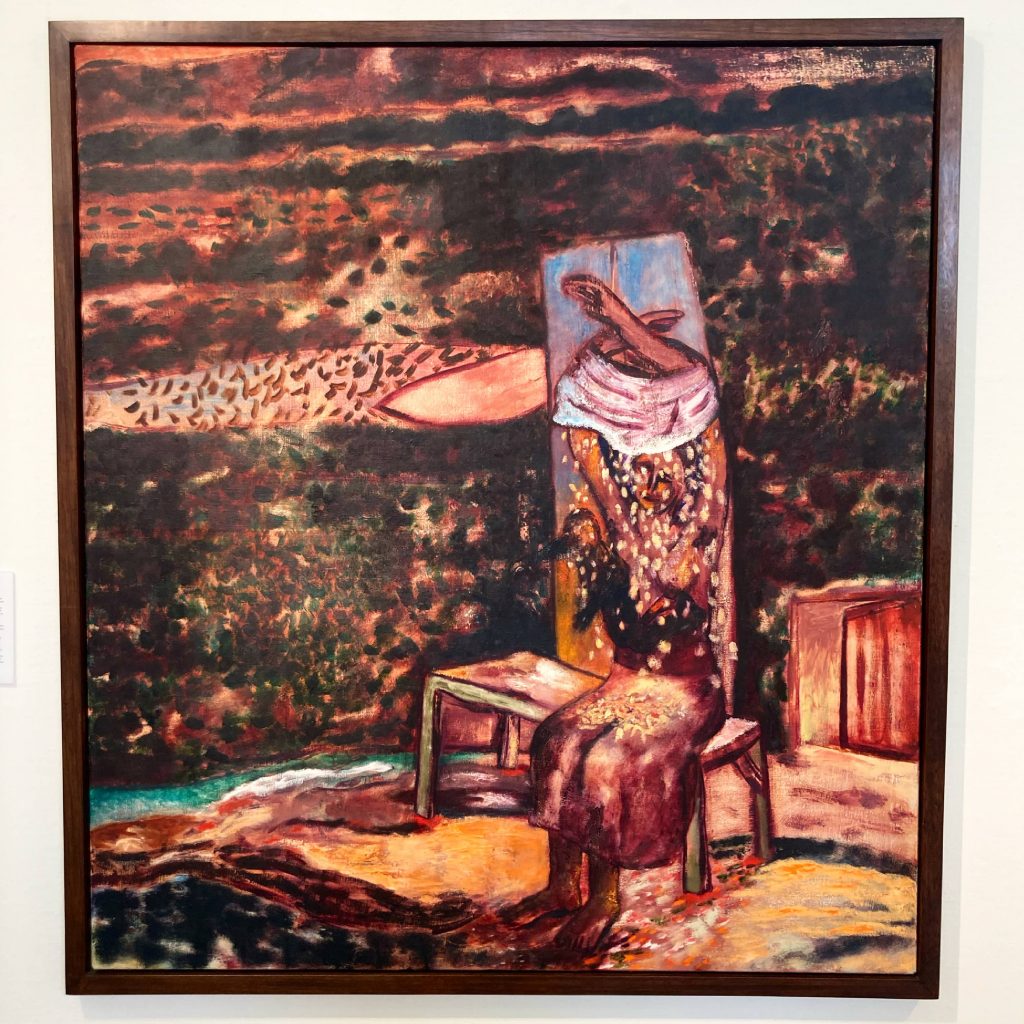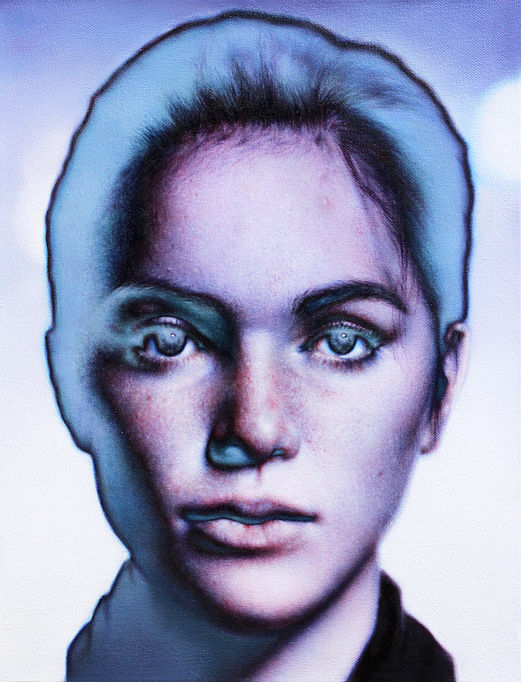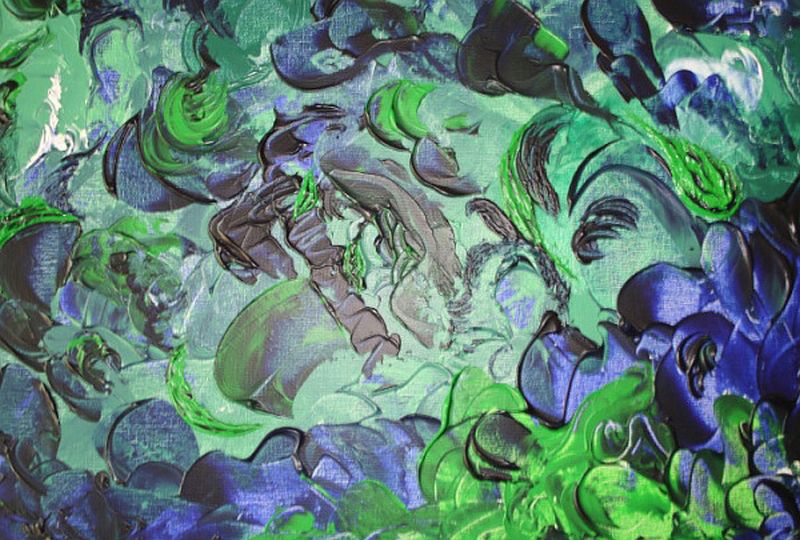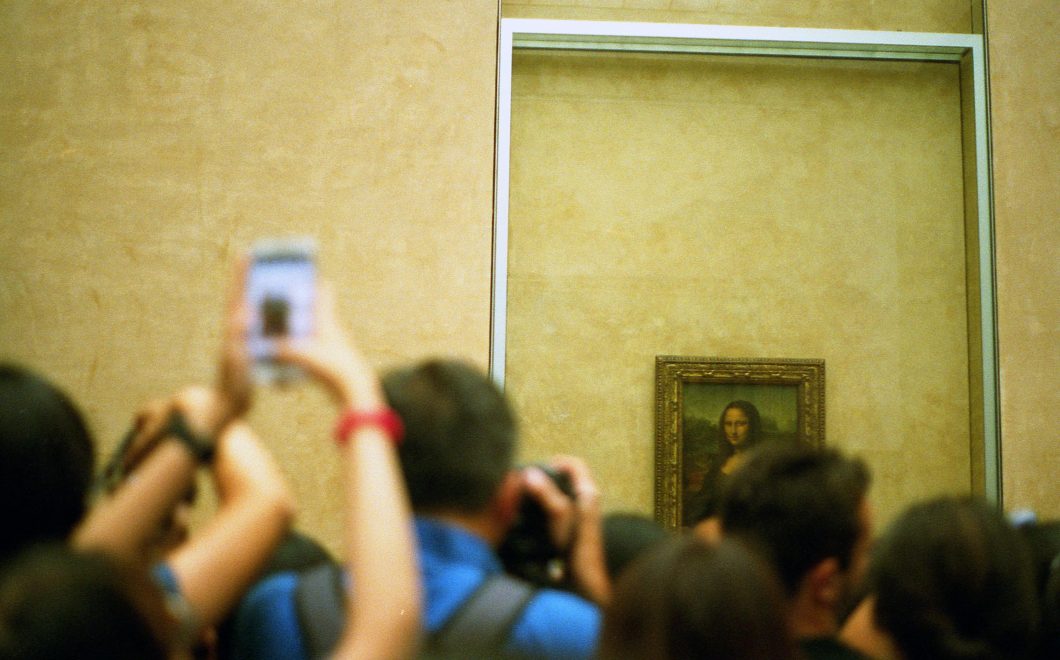I go to a gallery. I take a picture of a couple of pieces. I pick the ‘best’ photo I took. I upload it to Instagram. Taking photos has probably become too much of a focus for me, and I should really spend less time in exhibitions looking at the pieces through my iPhone, but that’s how it is.
Recently though I’ve been thinking a little more at the editing stage. Once I’ve rotated the photo to make the canvas look at straight as possible, I usually alter the sharpness to compensate for my phone’s blurry lens, and then I’ll increase the saturation and up the contrast. These changes are – to my mind – minor: I’m just trying to recreate what I saw in person.

After: Nahem Shoa
But – is that true? Might I be pushing that saturation bar a little higher because I prefer that blue brighter? Might I like the picture having higher sharpness levels because it emphasises the texture of the work, in a way you wouldn’t necessarily compute IRL? And the real question is: is that bad?
I’m not talking about whether or not you should be able to photoshop different imagery into a painting, or add extra extremities to a sculpture. These are minor ‘beautifications. It’s different for artists who are trying to sell their work online because harmless colour-correction ‘beautification’ could wind you up with a disappointed collector and a pissed-off gallery.
I’m not uploading these photos in order to sell the pictured artwork and I’m not trying to mislead anyone, but it does feel like a slippery slope. This could become a repeat of my teenage years slightly tweaking the lighting of selfies to hide my acne, which could easily have become an obsession with photo editing which plagued my generation.

After: Andrzej Jackowski
I’m sure my limited followers wouldn’t be less likely to chuck me a like if my posts were blurrier, a bit muted, slightly wonky. So why do I care?
I put a poll on Instagram:
Is it okay to edit* photos you’ve taken in galleries (of artworks) before uploading them to your Instagram?
*Sharpness, colour intensity, etc.
67% voted “a little”
10% voted “not at all”
The rest said “entirely”.
The majority of us seem aware that you shouldn’t fundamentally change what an image looks like. Some were stricter on what they deemed suitable; I got a lot of DMs from artists in particular.
Abbie Schug, an artist whose practice deals with the issue of translating digital images into painterly media, wrote:
I think it’s a very complex issue of ownership and intent. There is nothing wrong with editing images subtly if the intent is to truthfully represent the original … And although conceptually there is nothing wrong with the act, there are images out there that do not best represent the paintings. And for some artists I understand this may be too much. Photographing and particularly editing should be regulated and restricted on works that the artist (or owner) wishes to control the representation of.

Abbie Schug: After
Furrah Syed, who creates abstract, heavily-textured work said:
I definitely am against editing art works for an Instagram post. It shows disrespect towards the artist’s work. I can understand that the image may not look great [especially] if taken by a phone, [but] that is expected. The second you start editing the visual of the artwork it is an act of distortion.

Furrah Syed: Tino
This is the problem with translating paintings and objects into photography. Like translating art into words, or recording a live performance of a play and watching it back. Something inherent is lost or changed.
Should we just accept that? Or is this attempt to recreate the in-person experience at least good-at-heart? It’s a fine line that’s hard to define.

